What I Buy and Why
Photography Collector and Dealer Anna Walker Skillman Is Raising Strong Daughters on Images of Confident Women
Skillman owns and directs Jackson Fine Art in Atlanta, the gallery that launched Elton John's photography collection.
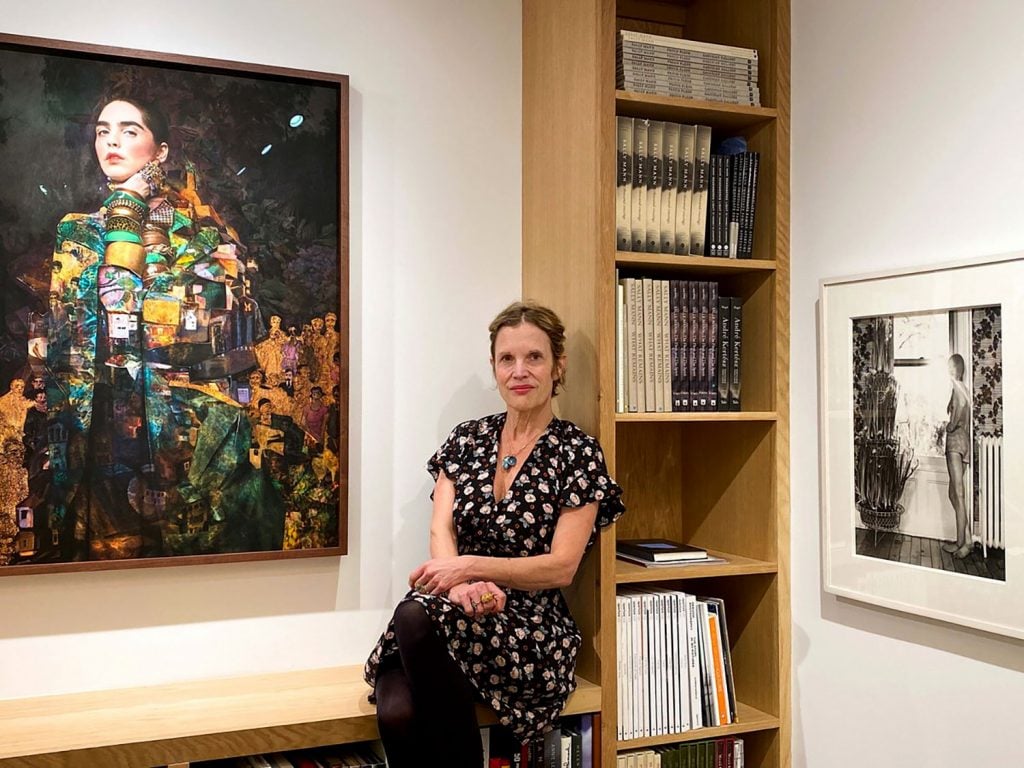
Skillman owns and directs Jackson Fine Art in Atlanta, the gallery that launched Elton John's photography collection.

Lee Carter

For two decades and counting, Anna Walker Skillman has built Jackson Fine Art into a prominent hub for contemporary and modern photography. The Atlanta-based gallery is now expanding and relocating, taking over a custom-built space in the ritzy Buckhead district, a move reflective of the city’s thriving art scene. The new gallery will provide ample space for offices, exhibitions, and a library.
Skillman first joined Jackson Fine Art in 1998 as its director. In 2003, she purchased the gallery from its founder, Jane Jackson, when she moved on to curate Elton John’s still-nascent photographic collection. The gallery was pivotal in assisting the musician in creating his own collection.
The relaunch of Jackson Fine Art is set for March 24, featuring works by Atlanta-based photographer Sheila Pree Bright, the collage-making duo Cooper Gorfer, and Francesca Woodman. In addition to organizing upwards of 10 exhibitions per year at Jackson, Skillman oversees the artistic program of various international art fairs, including Paris Photo and the Photography Show (AIPAD) in New York, and gives talks on photography collecting at public and private institutions.
We caught up with Skillman to learn how raising a family has informed her photographic collection and how it reflects her personal values.
What was your first purchase?
My first purchase was a black and white photograph by Mark Steinmetz, Magnolia Avenue, Knoxville (1992). I was drawn to the subtle elegance of this woman standing in an empty street. At the time, I was not aware of Lee Friedlander, Garry Winogrand, nor Diane Arbus, but I see the influence.
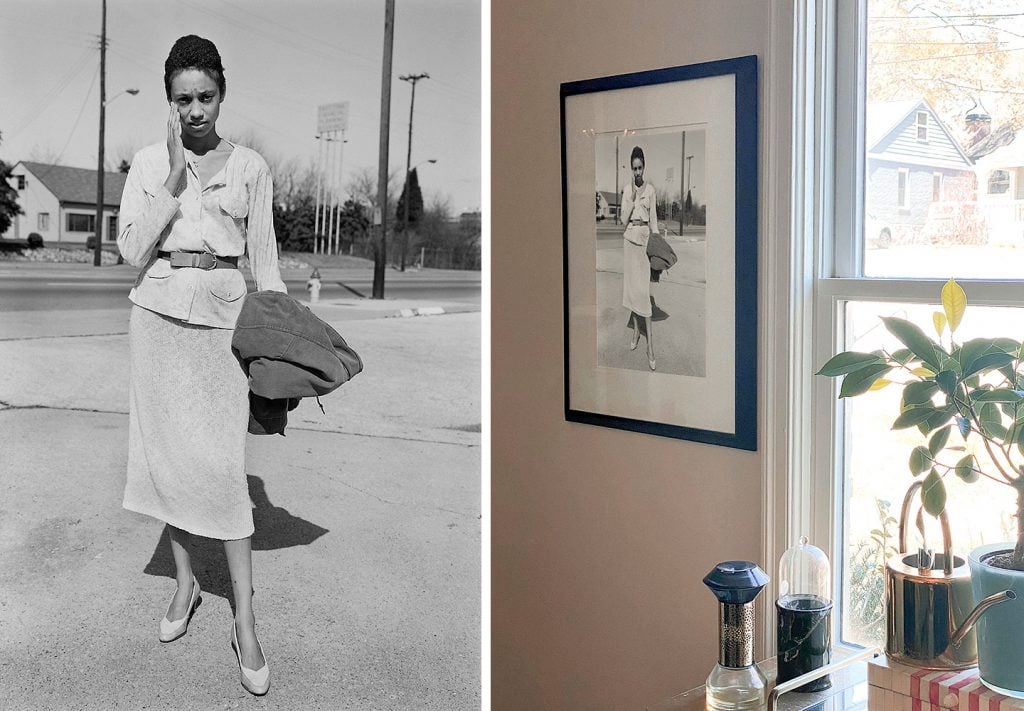
Mark Steinmetz, Magnolia Avenue, Knoxville (1992). Courtesy of Jackson Fine Art and Anna Walker Skillman.
I simply loved the photograph. It was the way the woman was dressed and the divine composition of the entire image. Your eye moves from the far left, noting the tree that disappears outside of the lens, then you are directed across over the house to focus directly on the center subject who is framed by two telephone poles. Her body is positioned perfectly below the crack in the road dividing the foreground and background.
The gesture of her hand, barely touching her face, shows vulnerability, as if she is perhaps caught off guard and not ready to be captured and exposed by a stranger’s lens. However, she gives permission with her strong posture, and her dress, though modest, is elegant and purposeful. This photograph is simply a portrait of a lady on a street, but the image speaks volumes, and the viewer gets to see their own story within them.
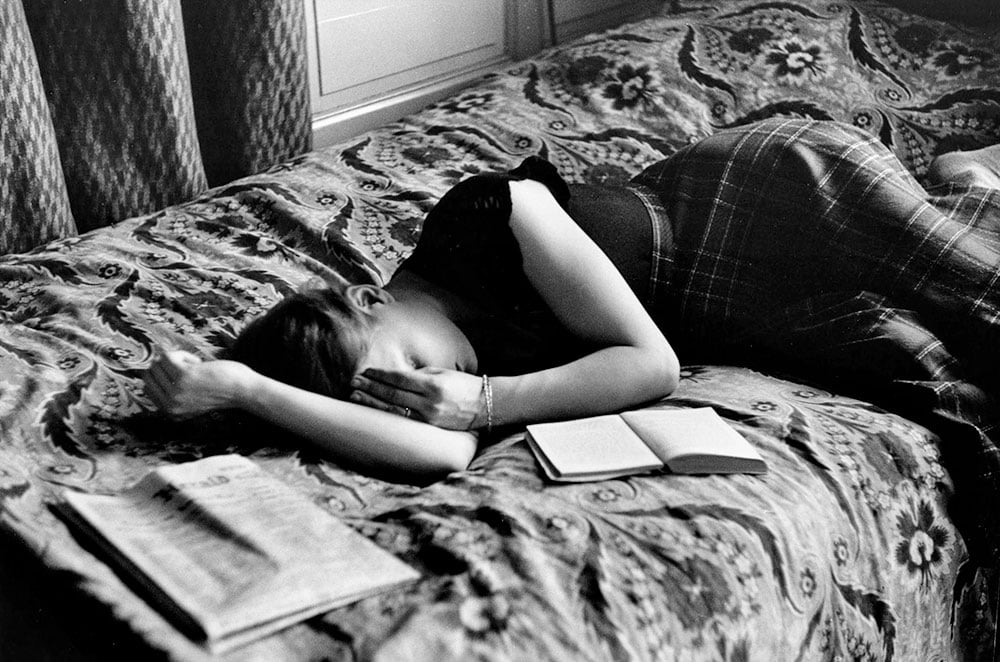
Elliott Erwitt, Paris (1952). Photo © Elliott Erwitt. Courtesy of Jackson Fine Art.
What was your most recent purchase?
The most recent addition to my collection is a photograph by Elliott Erwitt titled Paris (1952). It is of a woman laying on a bed with a book and this is exactly where I want to be in my life. It is timeless and depicts a world without cell phones, computers, email, Instagram—all of the noise in our lives today. I would give anything to go back to that time and be able to give myself permission to stop for a moment and completely let go.
It also represents motherhood and womanhood, and it is a reminder of all that we take on as females, wives, mothers, friends, providers, or business owners. And whoever said we could do it all is someone who clearly has no idea how much there actually is to do. I want to celebrate women, every day, everywhere, all the time!
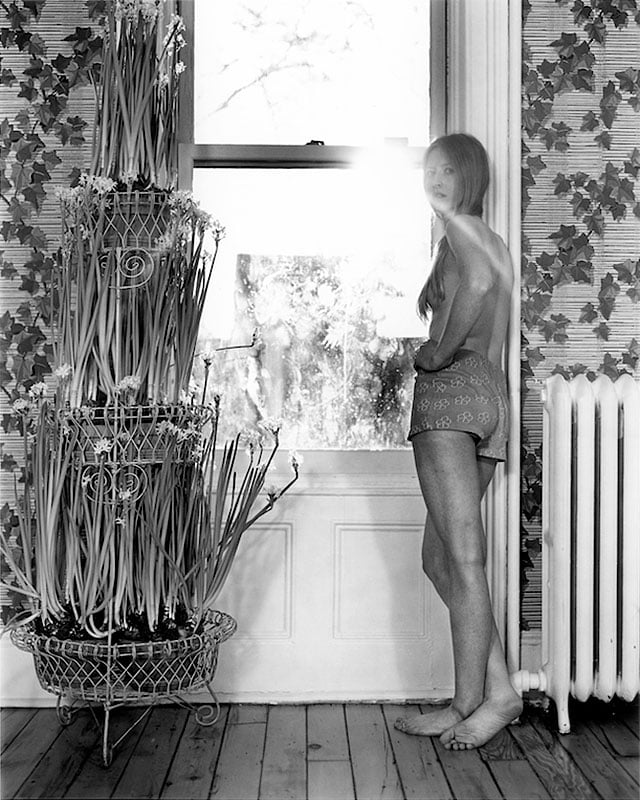
Katy Grannan, Angela, Red Hook, NY (2003). Photo © Katy Grannan. Courtesy of Jackson Fine Art.
Which works or artists are you hoping to add to your collection this year?
I was just talking to a longtime collector and old friend who consigned several Katy Grannan photographs to us to sell. When it was time to return them, I had a sudden need to own two of them. I told him I wanted to buy one (considering two). He said, “I have an idea. Why don’t I loan them both to you for you to keep as long as you want, then you loan them back, then you can have them again, and we will just do this over and over until we both die because you don’t need to spend any money right now!”
I said “You have a deal.” And they are now both hanging in my office library at the new gallery.
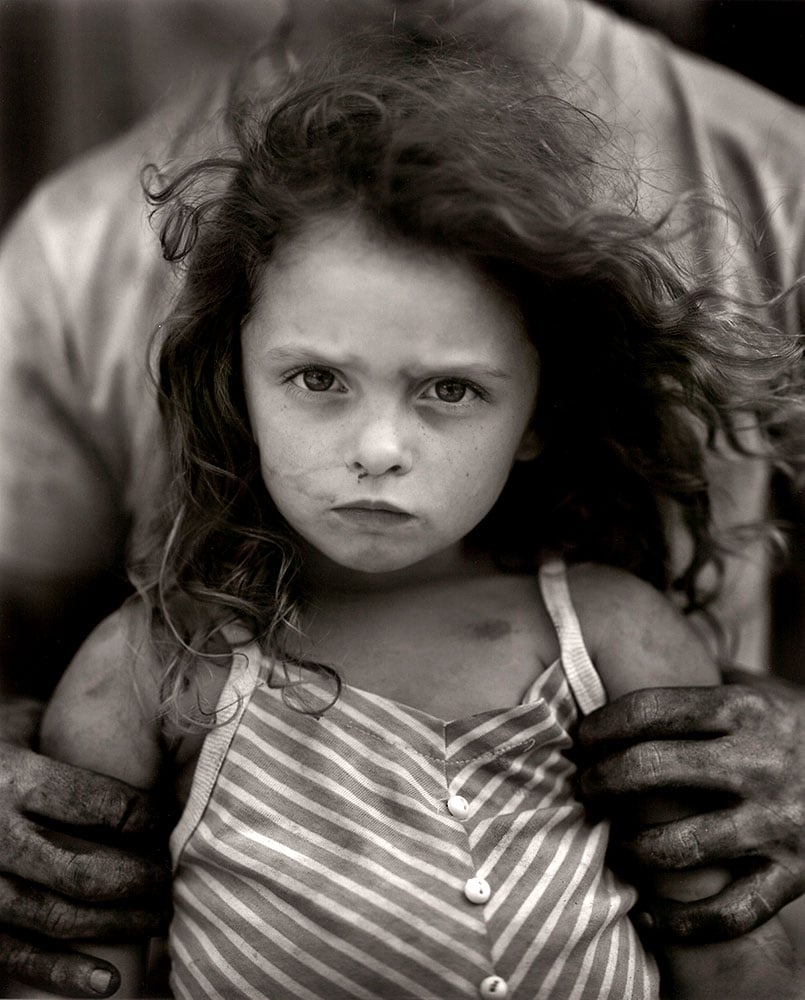
Sally Mann, Holding Virginia (1989). Photo © Sally Mann. Courtesy of Jackson Fine Art.
What is the most expensive work of art that you own?
Sally Mann’s Holding Virginia. Sally Mann’s work and her friendship are one of my most valued in my collection and life. I began collecting works early and own only a few, but they are some of my most treasured. Holding Virginia goes back to the heart of my collection—children and women. At an early age, girls have to be strong, and it continues through young adulthood and beyond. This image shows her father after working with iron holding her in his arms. Her expression is fierce and is about standing up for yourself and what you believe. I have three daughters and one son.
My girls have grown up around images of strong, confident women and I can honestly say it worked. I feel that every photo in my collection is priceless and, given the time I have been able to enjoy them as well as the time to come, my return on investment is undeniable.
I do not invest in art, nor do I view my collection as an asset class. I buy art because I love collecting photography and desire to look at it every day as it enhances my life immensely. I do not plan to sell my collection but hope to pass it down generation after generation for my loved ones to enjoy. But if I did have to sell it and it sold well… well that is simply icing on the cake, isn’t it?
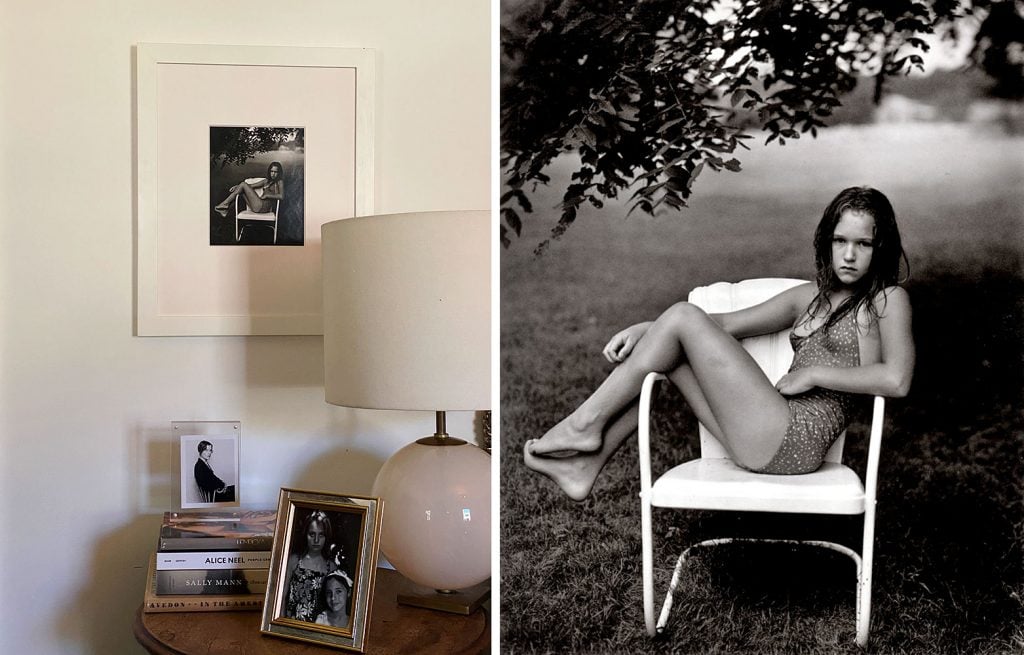
Sally Mann, Untitled from the “At Twelve”Series (Juliette in chair) (1983–1985). Photo © Sally Mann. Courtesy of Anna Walker Skillman and Jackson Fine Art.
Tell us about a favorite work in your collection.
Born in Augusta, Georgia, I had little art influence growing up. However, my mother’s mother—the polished, sophisticated, and elegant Fanny Bird Jones—was an inspiration.
Born in Valdosta, Georgia, Fanny left at 18 and moved to New York to attended Parsons in 1939. She studied art and illustration, graduating, then worked for Harper’s Bazaar in illustration. A few years later, she married my grandfather. They moved to Atlanta to start a family. In Atlanta, she took classes under artist Ben Shute at the Atlanta College of Art.
Years ago, I was gifted a collection of her portraits, which I cherish. My aunt also recently passed down her original Parsons portfolio. My grandmother was one of the founding members of the Forward Art’s Foundation, established in 1965, and continued her art until her eyesight failed from diabetes. She passed away when I was 12 and, unfortunately, she would never know that I have continued her passion for the arts here in Atlanta, but I know she would be proud.
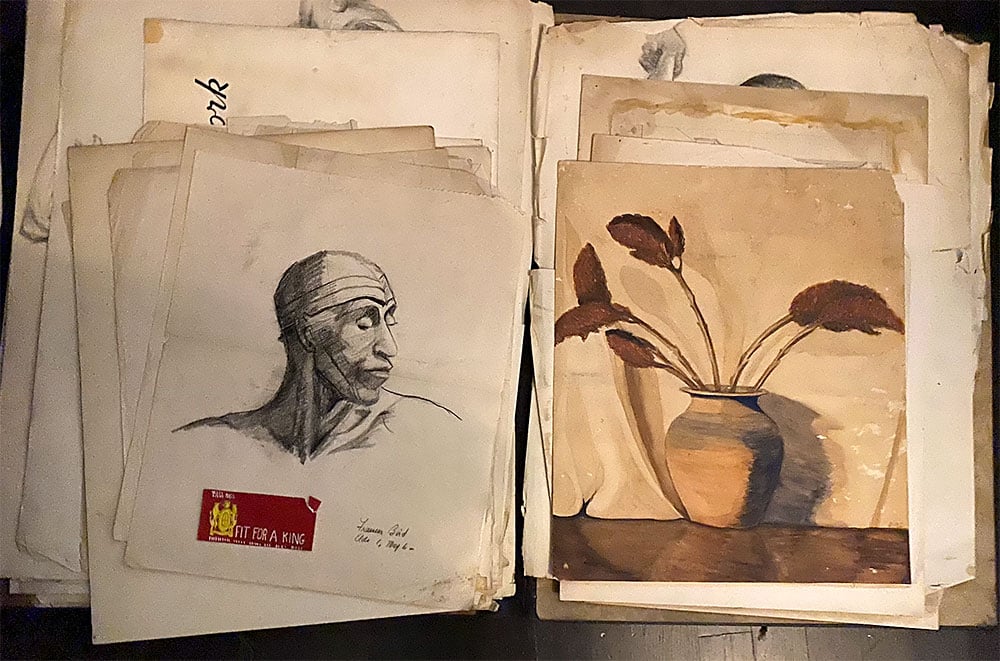
Fannie Bird Jones’s Parsons portfolio from 1939–42. Courtesy of Anna Walker Skillman.
Where do you buy art most frequently?
Well, of course I buy at Jackson Fine Art but I am also a secret collector of found vintage photographs, portraits of women and vintage silver gelatin carte postale prints on eBay and Etsy. Two years ago, the High Museum exhibited “André Kertész: Postcards from Paris,” curated by good friends Sarah Kennel and Liz Siegel. This is by far one of my absolute favorite exhibitions and I was able to experience it with visiting colleague Darius Himes, [international head of photographs at Christie’s]. We both stood before these exquisite tiny prints with wonder and curiosity about a vibrant time in Paris in the late 1920s.
The vintage postcard silver gelatin prints have an alluring depth and velvety warm rich tones. The small size completely draws in the viewer and takes you to 1929, Paris, where you feel you are sitting at Café du Dome in the company of great creative minds such as Mondrian, Kiki, Collette and surrealist Man Ray, exchanging carte postales across the table as calling cards.
[Founding curator of the Department of Photographs at the Metropolitan Museum of Art] Maria Morris Hambourg once called Kertész’s carte postales “an exhibition in his pocket” when she heard that he would carry these around with him.
The impact of that show has me hunting down carte postales from this exact time and the exact photographic paper by R. Guilleminot marked with a tiny horsehead logo on the reverse side of the postcard. I have found a few portraits and one of an object depicting a lace fan that I have convinced myself is a Man Ray, well at least in spirit.
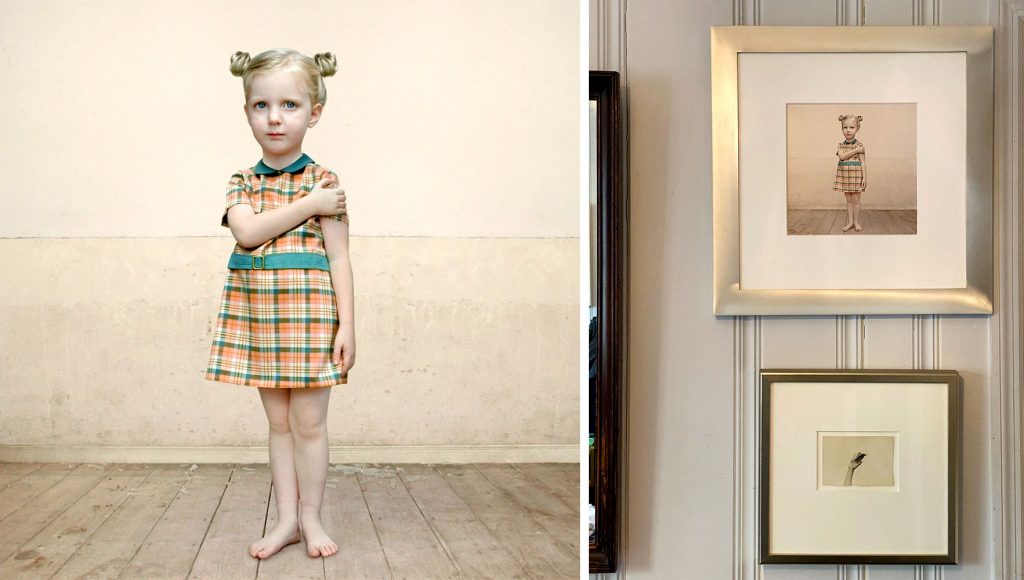
Loretta Lux, Hidden Rooms (2001). Photo © Loretta Lux. Courtesy of Jackson Fine Art and Anna Walker Skillman.
Is there a work you regret purchasing?
Honestly, no. I am grateful that I live everyday with endless beauty and creative spirit. The gift of seeing, touching, feeling, and smelling (silver gelatin prints have a scent) so many incredible artworks that I have no need to own any of it because I live it. I am content with my collection, but if something speaks to me I tend to think about it for some time and if I am still thinking about it, then I consider buying it.
More often, I tend to buy carte postales and found photographs of women. When I feel like I need something new, I look there. I also collect dresses, perfumes, and vintage perfume bottles.
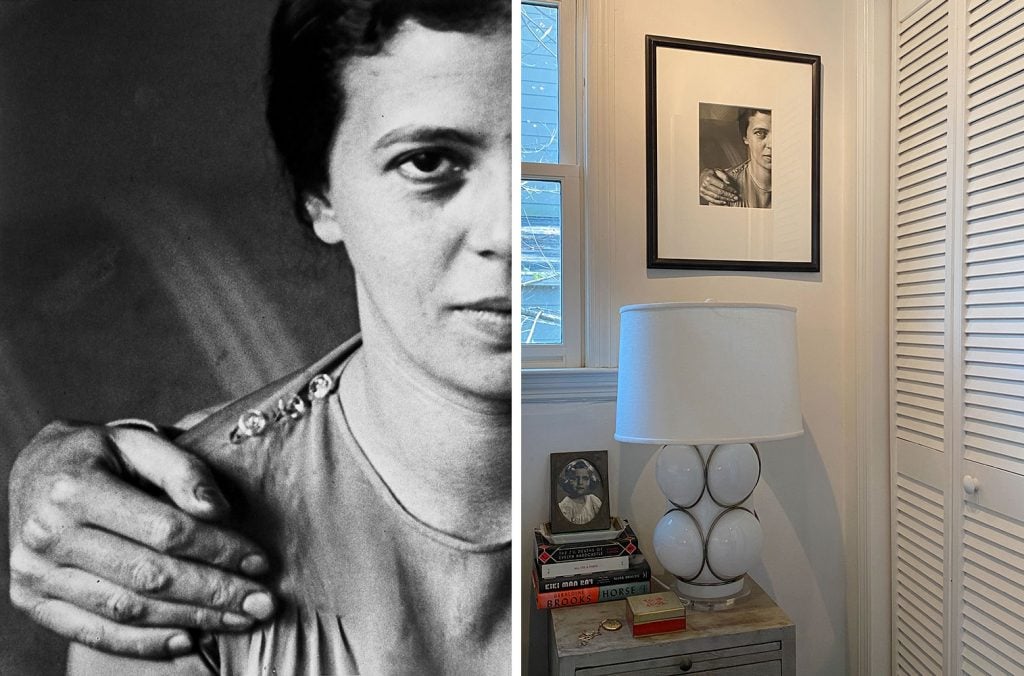
André Kertész, Elizabeth, Paris (1931). Courtesy of Jackson Fine Art and Anna Walker Skillman.
I would like to learn more about ceramics. Jackson Fine Art’s previous owner Jane Jackson just opened a new gallery, The Object Space, where she is featuring ceramics and textiles. I am drawn to her eye and would love to learn more about pottery, and as luck would have it, she can now teach me about that!
What work do you have hanging above your sofa?
I have a huge mirror hanging above my sofa that reflects the works on the mantelpiece, which are two of my favorites: Mona Kuhn’s Morgane and Elliott Erwitt’s Paris (1952). You can also see other works around the room.
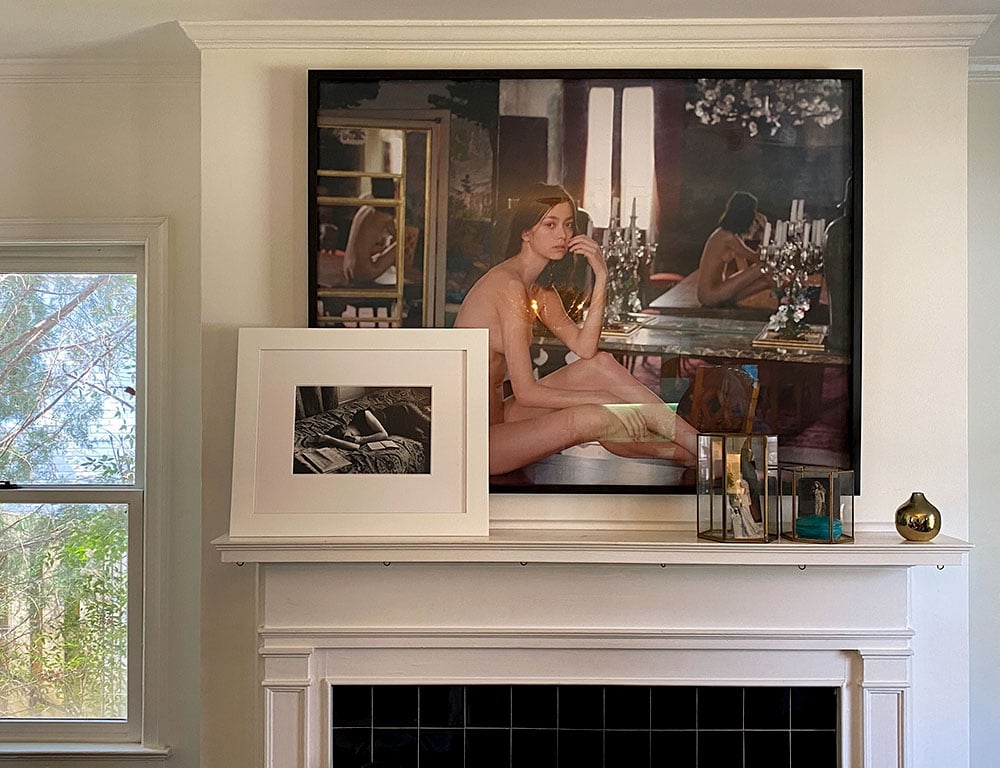
Mona Kuhn, Morgane (2010). Courtesy of Anna Walker Skillman.
What about in your bathroom?
A tiny Masao Yamamoto print, a wedding gift to me by the former owner of the gallery, Jane Jackson. Yamamoto was the first photographer I learned about at Jackson Fine Art, and still today he is one of my favorites. These tiny images are reminiscent of those classic carte postales from 1920s Paris.
These tiny and contemporary silver gelatin prints, which are tea-stained and sometimes adorned with gold, live in a wooden box with hundreds of other Yamamoto prints, resulting in poetic moments that begg the viewer to stop and rummage through, as if you have discovered a treasure chest of old photos in your grandmother’s attic.
The series is titled “A Box of Ku”—Ku means “emptiness” in Japanese. Once on a trip to Atlanta, the artist gifted an even smaller print and told me to carry it around in my pocket or wallet and give it along to someone else when it was time, and have them do the same. “You will know,” he whispered.
I loved this idea of movement and joy and thought. What a great film “A Box of Ku” would make—where you follow the photograph from pocket to person and back to pocket to person. Over years where would it go? The photograph becomes its own history made up of tiny stories of those who held it in their hands, in their pockets, or hung it in their homes.
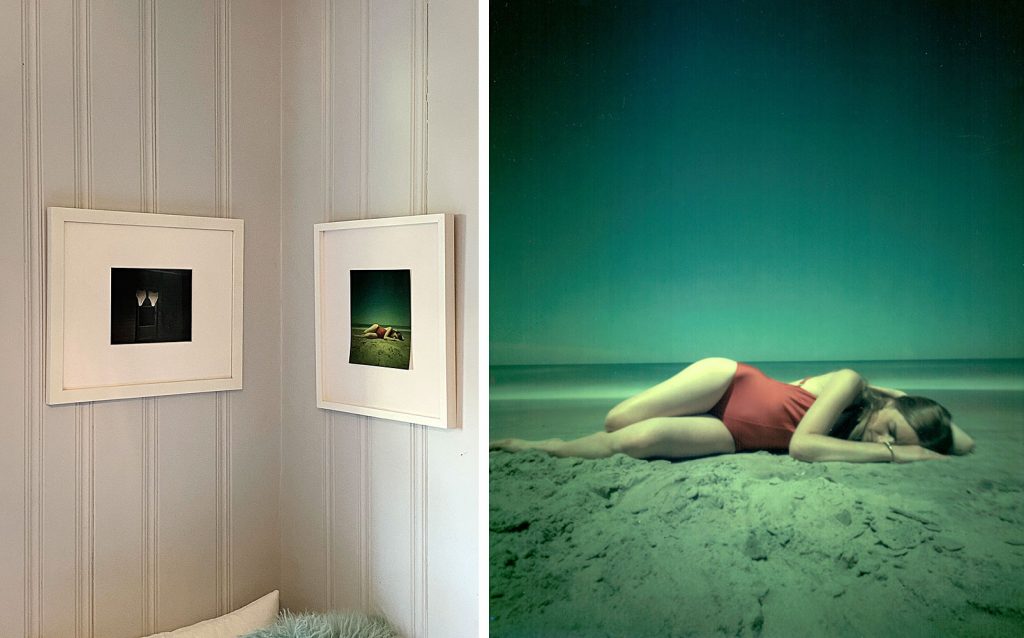
Willie Anne Wright, Virgina Beach, Virgina: Woman by the Ocean (1978). Photo © Willie Anne Wright. Courtesy of Anna Walker Skillman and Jackson Fine Art.
What is the most impractical work of art you own?
Isn’t all art impracticable yet necessary? I have a wedding portrait of myself by close friend and artist Angela West, taken in 2001. At the time it seemed a little self-indulgent and impracticable, to make a large print to hang in my house, but I thought of painted portraiture throughout art history, as well as the tradition of Southern matriarchs hanging over the mantelpieces. I realized I made the right decision when my ex-husband at the time was caring for our toddler while I was away for an art fair, and the only way he could calm her down was to stand in front of the portrait. Now in a new marriage, I still look back at that portrait 22 years ago and love it.
If you could steal one work of art without getting caught, what would it be?
Any and all portraits of Lee Miller by Man Ray!
More Trending Stories: